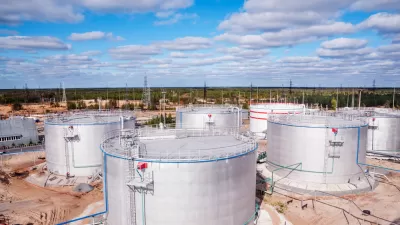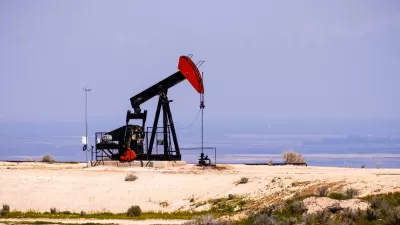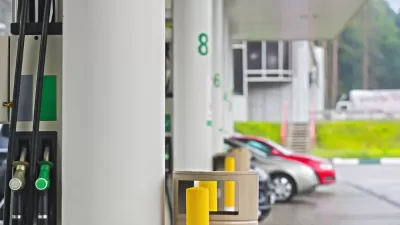In this Washington Post blog, Brad Plumer writes on a New American Foundation report on rising gas prices and their disproportionate impact on the poor and middle class. Public policies intended to reduce fuel consumption, however, benefit the rich.
A person of modest means is more likely to buy a used car than a new, fuel-efficient car, much less an even more costly new all electric vehicle, despite the $7,500 federal credit. In fact, when fuel prices rise, the used car market is flooded with cheap SUVs while compact cars are grow pricier and fewer. Yet subsidies and regulations predominantly aim to reduce fuel consumption from wealthier motorists, according to New American Foundation's newly released working paper, The Price-Induced Energy Trap (PDF).
The benefit of higher fuel prices in reducing fuel consumption
pales in comparison to the much larger expenditures in transportation resulting from the price increase notwithstanding some modal switch to transit, cycling, or commuting from home.
"In 2011, as gas prices have risen, Americans have cut back on fuel consumption by about 1.8 percent." However, "overall gas expenditures still rose 25 percent over the past year, or $102 billion. That essentially wiped out all of the benefits from President Obama's middle-class tax cut."
New American Foundation's Director of Energy Policy Initiative "Lisa Margonelli laid out the basic situation. Right now, the average family of four spends more on transportation than on health care and taxes combined."
From The Price-Induced Energy Trap: "Despite an anticipated 1.8 percent decline this year in gasoline consumption, for example, the overall expenditures for gasoline will increase 25 percent...Better understanding why very high gasoline prices do not lead to dramatic reductions in gasoline consumption could lead to policies that more quickly, and less painfully, reduce gasoline demand and consumer spending."
Thanks to John Hartz
FULL STORY: How gas prices are killing the middle class

Maui's Vacation Rental Debate Turns Ugly
Verbal attacks, misinformation campaigns and fistfights plague a high-stakes debate to convert thousands of vacation rentals into long-term housing.

Planetizen Federal Action Tracker
A weekly monitor of how Trump’s orders and actions are impacting planners and planning in America.

In Urban Planning, AI Prompting Could be the New Design Thinking
Creativity has long been key to great urban design. What if we see AI as our new creative partner?

King County Supportive Housing Program Offers Hope for Unhoused Residents
The county is taking a ‘Housing First’ approach that prioritizes getting people into housing, then offering wraparound supportive services.

Researchers Use AI to Get Clearer Picture of US Housing
Analysts are using artificial intelligence to supercharge their research by allowing them to comb through data faster. Though these AI tools can be error prone, they save time and housing researchers are optimistic about the future.

Making Shared Micromobility More Inclusive
Cities and shared mobility system operators can do more to include people with disabilities in planning and operations, per a new report.
Urban Design for Planners 1: Software Tools
This six-course series explores essential urban design concepts using open source software and equips planners with the tools they need to participate fully in the urban design process.
Planning for Universal Design
Learn the tools for implementing Universal Design in planning regulations.
planning NEXT
Appalachian Highlands Housing Partners
Mpact (founded as Rail~Volution)
City of Camden Redevelopment Agency
City of Astoria
City of Portland
City of Laramie





























